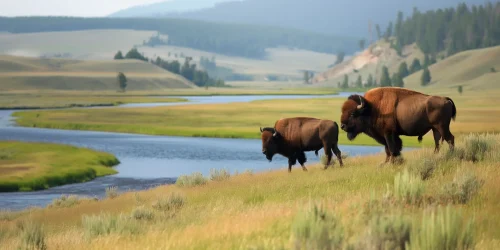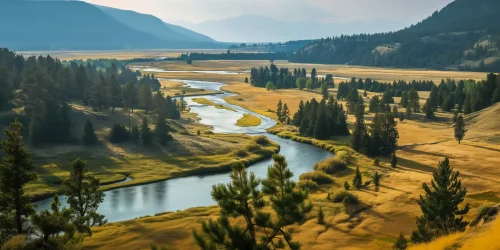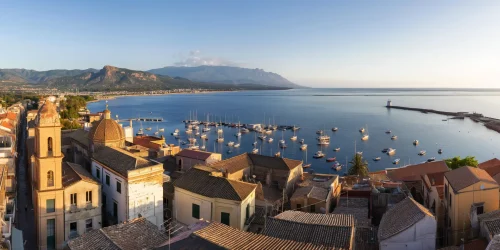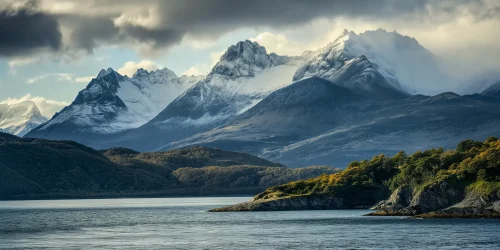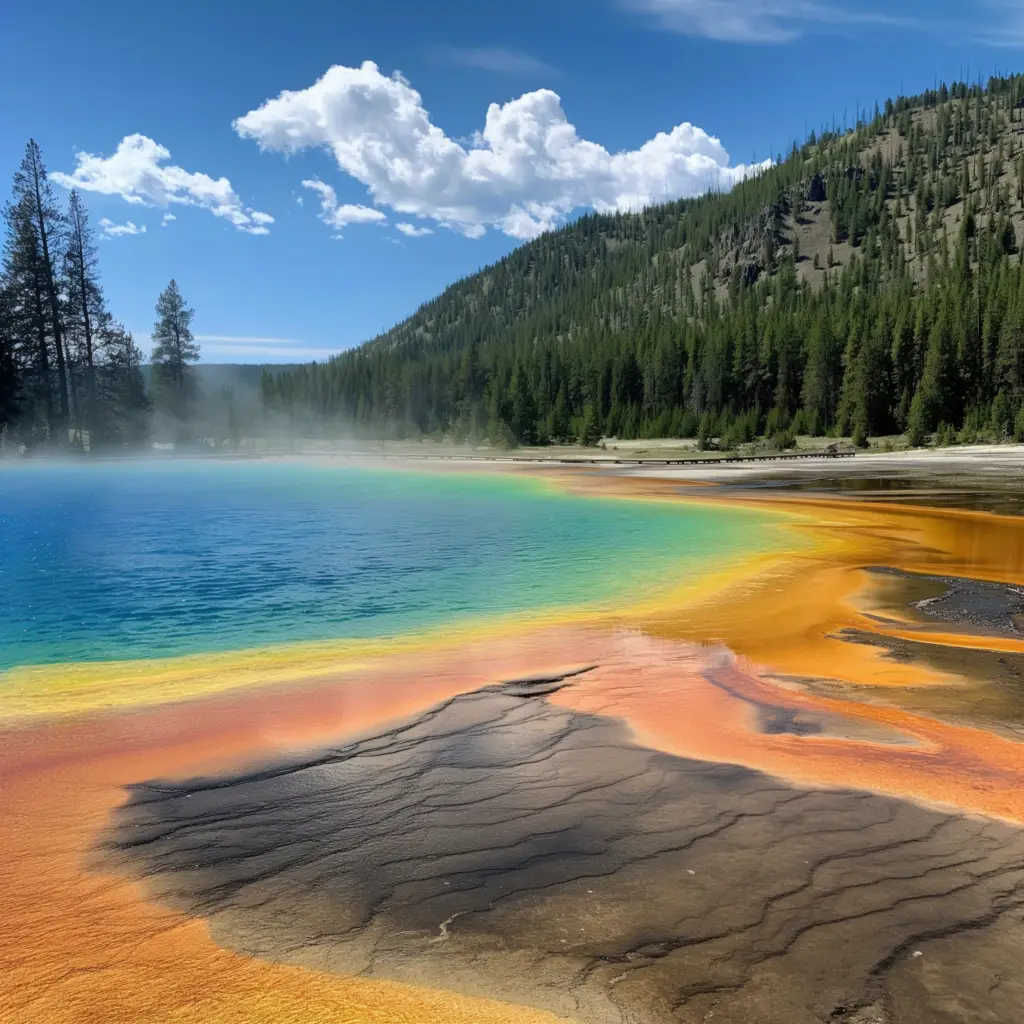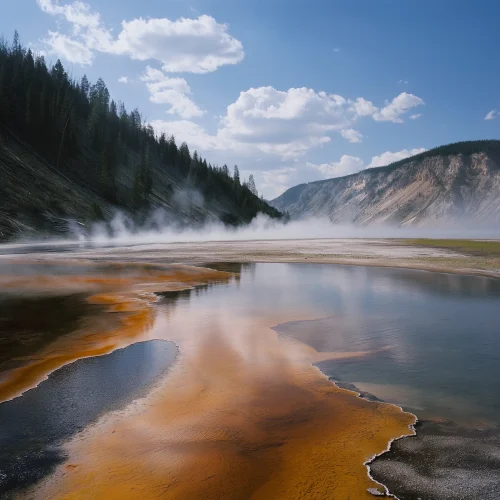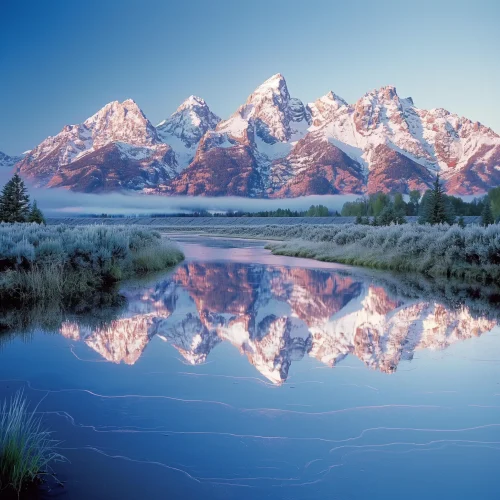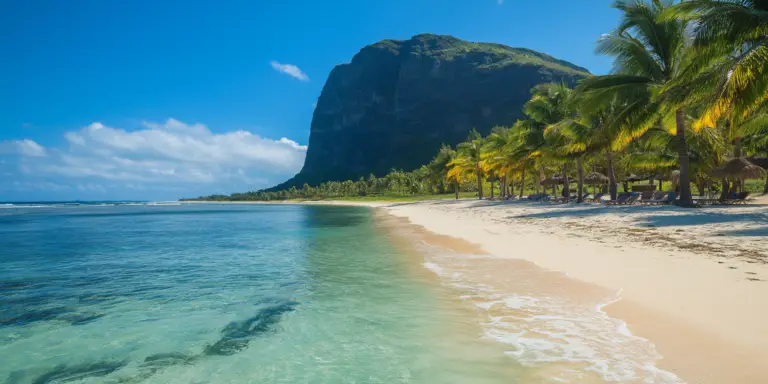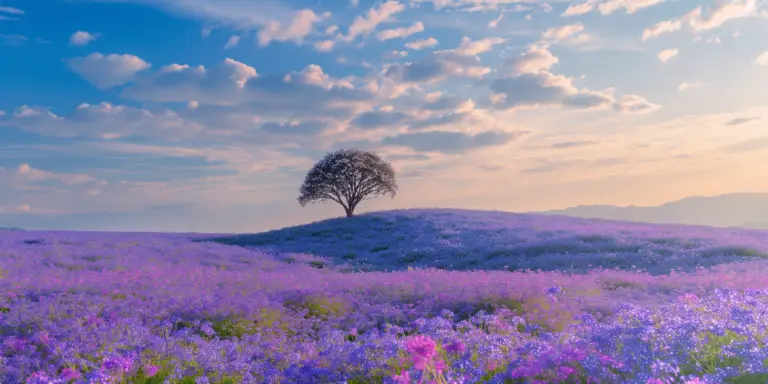Yellowstone National Park is renowned for its geothermal wonders, with hot springs being among the most fascinating features. These natural marvels are not only breathtakingly beautiful but also provide a glimpse into the Earth’s geothermal activity. Let’s dive into some of the most notable hot springs in Yellowstone and discover what makes each one unique.
Grand Prismatic Spring
Grand Prismatic Spring is the largest hot spring in the United States and the third largest in the world. Its vivid colors resemble a rainbow painted on water, making it one of Yellowstone’s most iconic sights. The stunning hues of blue, green, yellow, orange, and red are caused by different species of thermophilic bacteria living in the mineral-rich waters.
- Size: Approximately 370 feet in diameter and over 121 feet deep.
- Best Viewpoints: Walk along the boardwalk to get close to the spring, or hike the Fairy Falls Trail for a panoramic view from the overlook.
Mammoth Hot Springs
Mammoth Hot Springs is famous for its unique terraces made of travertine, a form of limestone deposited by the hot water. The terraces are constantly changing due to the continuous flow of water and the precipitation of minerals, creating an ever-evolving landscape.
- Formation: The springs are formed as heated groundwater ascends through limestone, dissolving calcium carbonate and depositing it at the surface.
- Notable Features: The Palette Spring and Minerva Terrace are among the most striking formations at Mammoth Hot Springs.
Norris Geyser Basin
The Norris Geyser Basin is the hottest and most dynamic geyser basin in Yellowstone, featuring numerous hot springs that are both intriguing and beautiful.
- Steamboat Geyser: The world’s tallest active geyser, which occasionally erupts to heights of over 300 feet, is located here. Even when not erupting, the surrounding hot springs and fumaroles are worth exploring.
- Echinus Geyser: Known for its acidic water, this geyser’s eruptions are colorful and relatively frequent, making it a must-see in the basin.
Morning Glory Pool
Morning Glory Pool is named for its resemblance to the morning glory flower. However, its vibrant blue color has been fading due to debris and vandalism, which has caused changes in the water temperature and bacterial growth.
- Location: Found at the end of the Upper Geyser Basin, near Old Faithful.
- Conservation Efforts: Efforts are ongoing to protect and preserve this delicate feature.
West Thumb Geyser Basin
Located on the shore of Yellowstone Lake, the West Thumb Geyser Basin offers a unique combination of geothermal features with a scenic lakeside backdrop.
- Fishing Cone: A hot spring located in the lake itself, it once tempted anglers to cook their catch directly in its boiling waters.
- Abyss Pool: One of the deepest hot springs in the park, with crystal clear water that gives a mesmerizing view into its depths.
Black Sand Basin
Black Sand Basin is known for its colorful hot springs and striking contrast with the surrounding black volcanic sand.
- Rainbow Pool: This pool lives up to its name with brilliant colors.
- Sunset Lake: A large, brilliantly colored hot spring that reflects the changing light beautifully.
Safety Tips for Visiting Hot Springs
- Stay on Boardwalks: The ground around hot springs can be fragile and unstable. Always stay on designated paths and boardwalks.
- Keep Your Distance: The water in hot springs can be extremely hot and potentially dangerous. Avoid touching or entering any geothermal features.
- Respect Wildlife: Animals may frequent hot spring areas. Observe from a distance and never approach wildlife.
Conclusion
The hot springs of Yellowstone National Park are not only spectacular natural wonders but also vital components of the park’s geothermal system. Each hot spring offers a unique glimpse into the dynamic processes occurring beneath the Earth’s surface. Whether you’re captivated by the colors of the Grand Prismatic Spring, the terraces of Mammoth Hot Springs, or the unique features of Norris Geyser Basin, Yellowstone’s hot springs provide an unforgettable experience. Remember to respect these delicate environments to preserve their beauty for future generations.
